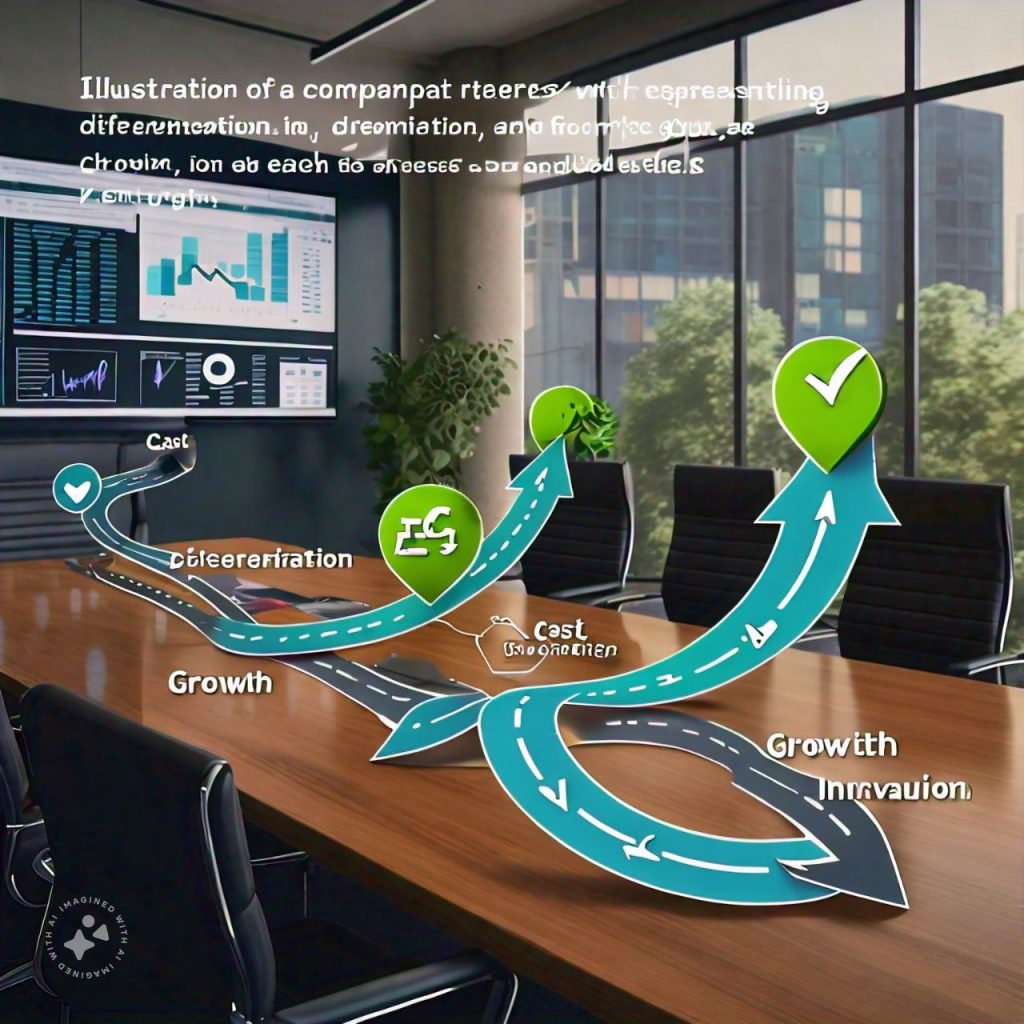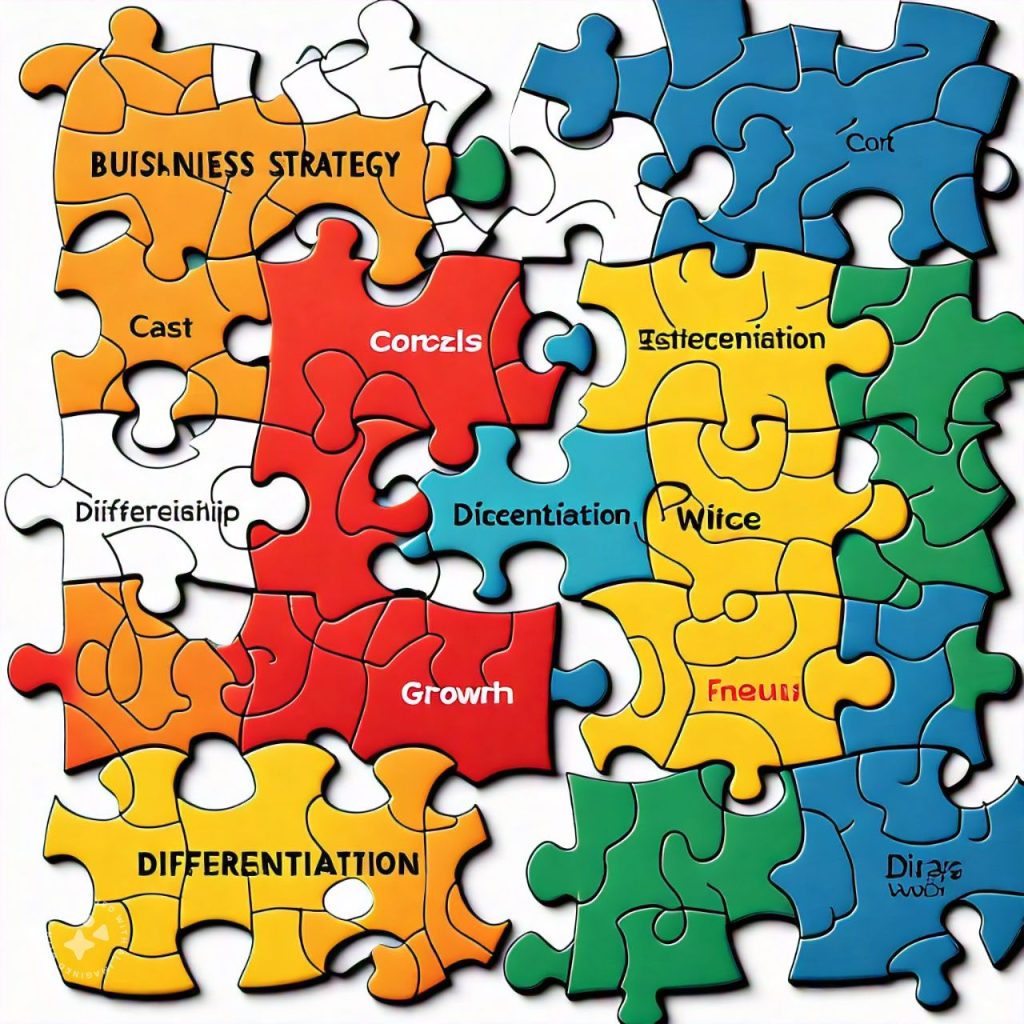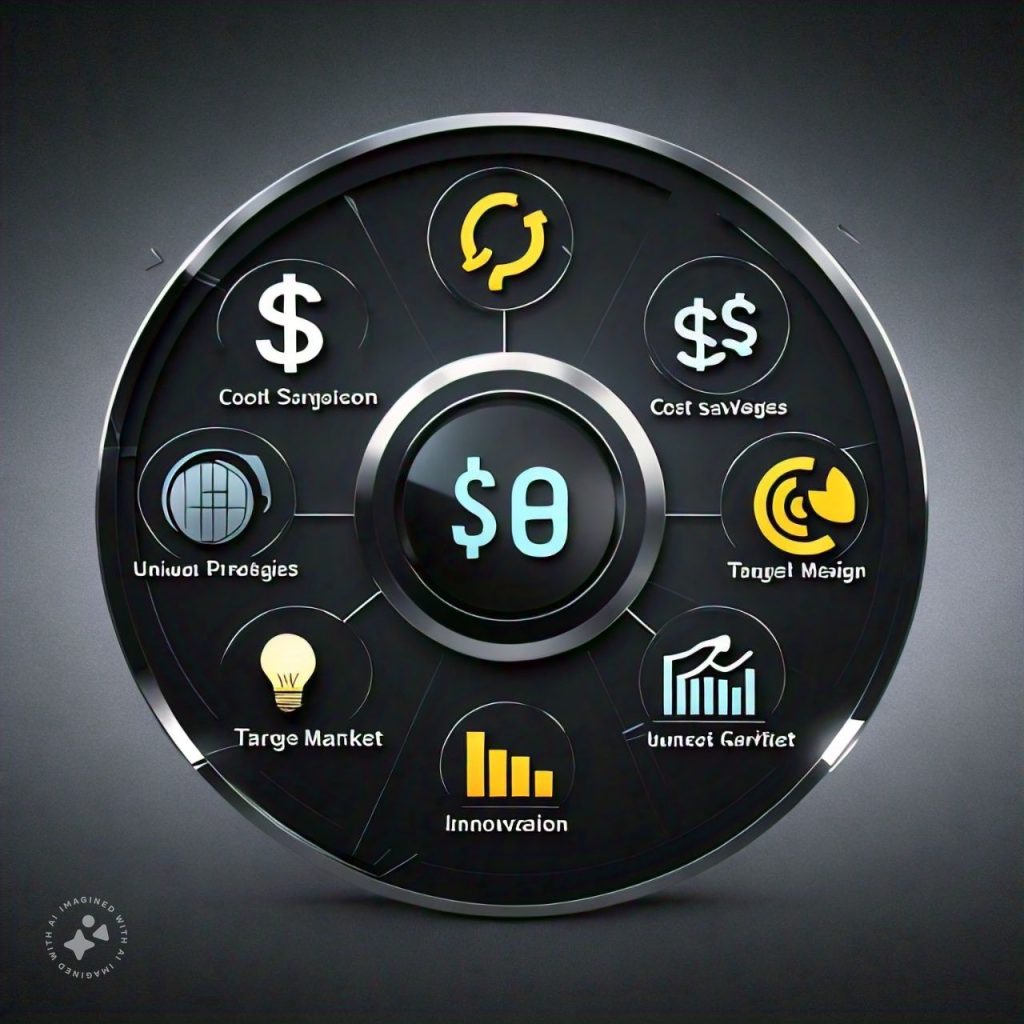Introduction
In a world where businesses constantly battle for market share, customer loyalty, and profitability, having a solid strategy isn’t just an option—it’s essential. I’ve seen companies rise and fall based on their approach to planning and execution. So, let’s break down the five most effective strategies that can turn your vision into a success story.
Why Do Strategies Matter?
Problem
Imagine a business that keeps churning out products and launching campaigns, yet still struggles to maintain a foothold in the market. They are likely missing a solid strategy, which is why they’re stuck in reactive mode, struggling to make real progress.

Agitate
Without a clear plan, it’s impossible to navigate the market effectively. Companies that lack strategic focus may find themselves burning cash on initiatives that don’t yield results. That’s not a sustainable approach, and it leads to frustrated employees, confused customers, and dwindling profits.
Solution
A strategic strategy offers structure, direction, and purpose. It provides a clear path to follow, enabling a business to respond proactively rather than reactively. Understanding the five key strategies and knowing when to use each one can be a game-changer for any organization.
What Are the Five Key Strategic Strategies?
1. Cost Leadership
Cost leadership involves becoming the lowest-cost producer in the industry. By minimizing costs, companies can set their prices lower than competitors, attracting price-sensitive customers and capturing a larger market share.
Case Study: Walmart’s cost leadership strategy has made it a retail giant. By emphasizing supply chain efficiency and leveraging bulk purchasing, Walmart can offer prices its competitors find hard to match. In 2023, Walmart reported a 6.4% increase in sales, much of which it attributed to its low-price model, demonstrating the power of cost leadership when executed effectively.

2. Differentiation
Differentiation is all about making your product or service stand out in a crowded marketplace. This approach focuses on delivering unique features or experiences that customers value enough to pay a premium for.
Case Study: Apple has become a global leader through differentiation. Apple’s focus on design, innovation, and seamless integration between devices makes it hard to replicate. In 2022, Apple achieved over $365 billion in revenue, largely due to loyal customers who value its differentiated products.
3. Focus Strategy
A focus strategy narrows down the target market. Rather than going broad, companies using this strategy zoom in on a specific demographic, geographic area, or customer segment and tailor their products to that market.
Case Study: Tesla used a focus strategy in its early years by targeting high-end electric vehicle (EV) consumers. By focusing on eco-conscious and affluent customers, Tesla built a solid reputation in the EV space before expanding its reach with more affordable models like the Model 3. As a result, Tesla’s market value skyrocketed from $70 billion in 2019 to over $1 trillion by 2021.
4. Growth Strategy
Growth strategies are all about expansion—whether through new markets, products, or even mergers and acquisitions. Companies that adopt a growth strategy aim to capture a larger share of the market and increase their footprint.
Case Study: Amazon has followed an aggressive growth strategy by constantly expanding its product lines, entering new markets, and acquiring companies like Whole Foods. In 2020, Amazon’s acquisition strategy allowed it to become a leader in both e-commerce and cloud computing, generating over $386 billion in revenue.

5. Innovation Strategy
Innovation strategy emphasizes creating new products or finding unique ways to deliver existing ones. Companies that innovate consistently tend to disrupt the market, often rendering competitors irrelevant.
Case Study: Netflix disrupted the entertainment industry by switching from DVD rentals to a streaming model. By continuously innovating, Netflix attracted over 238 million subscribers worldwide by 2023, leaving competitors scrambling to match its growth.
Examples of Each Strategy
1. Cost Leadership: Ryanair
Ryanair, a low-cost airline, has become synonymous with budget travel in Europe. They’ve adopted a no-frills approach, charging for extras like checked luggage and in-flight snacks. By reducing unnecessary costs, Ryanair offers fares as low as €10, drawing millions of passengers annually.
2. Differentiation: Harley-Davidson
Harley-Davidson’s differentiation strategy has built a dedicated community around its brand. Known for high-quality, powerful motorcycles, the brand targets a niche but fiercely loyal customer base. In 2021, Harley-Davidson reported over $4 billion in revenue, much of it driven by its reputation and unique lifestyle appeal.
3. Focus Strategy: IKEA
IKEA uses a focused low-cost strategy by concentrating on furniture and home essentials for young, cost-conscious customers. IKEA’s self-service model and flat-pack furniture allow it to keep prices low and pass the savings to customers, with the added convenience of an in-store restaurant.
4. Growth Strategy: Starbucks
Starbucks’ growth strategy is evident in its massive global expansion. With over 35,000 stores worldwide, Starbucks continuously explores new markets and regions. In 2022 alone, Starbucks opened over 1,300 new stores, showing how a growth strategy can translate to global success.
5. Innovation Strategy: Google
Google’s innovation strategy has made it a leader in digital services, from search engines to self-driving cars. By constantly pushing the boundaries, Google maintains its relevance across multiple industries and drives continuous revenue growth through services like YouTube, Google Cloud, and Android.
How to Choose the Right Strategy for Your Business
Understanding Your Market and Resources
The right strategy depends on your market position, resources, and long-term goals. For instance, if your goal is to capture price-sensitive customers, a cost leadership strategy might work best. If you’re targeting high-end users, a differentiation strategy could be more appropriate.
Assessing Competitive Landscape
Analyze competitors and industry trends. A saturated market may call for a differentiation or focus strategy, while a developing industry with room for new entrants might benefit from growth or innovation strategies.

Aligning with Your Core Strengths
Play to your strengths. If you excel in creating unique products, lean into differentiation. If operational efficiency is your strong suit, consider a cost leadership approach.
Conclusion
Implementing the right strategic strategy is like having a map to guide you through the competitive landscape. Whether it’s lowering costs, creating unique products, targeting a specific market, expanding your reach, or embracing innovation, each strategy has its place in today’s business world. By choosing wisely, understanding the specifics of your business, and focusing on what works best for your goals, you’re on your way to achieving sustainable success.
FAQs on Strategic Strategies
Q1: What is the most commonly used strategy among small businesses? A1: Many small businesses start with a focus strategy, targeting a niche market. It’s cost-effective and allows them to build a dedicated customer base before scaling.
Q2: Can a business use more than one strategy at the same time? A2: Yes, some businesses combine strategies. For example, a company may use cost leadership while also focusing on a specific demographic. However, using too many strategies at once can dilute efforts and confuse the brand.
Q3: How often should a business reassess its strategy? A3: It’s recommended to review strategies annually or during major industry shifts. Regular reassessment ensures alignment with market trends and business objectives.
Q4: What’s the biggest challenge when implementing a cost leadership strategy? A4: The main challenge is balancing cost reduction without sacrificing quality. Maintaining efficiency in all areas, from production to distribution, is key to successful cost leadership.
Q5: How does innovation strategy differ from differentiation? A5: Differentiation focuses on making products unique, while innovation often involves creating entirely new products or delivery methods. Innovation tends to disrupt existing markets, while differentiation sets products apart within a market.






